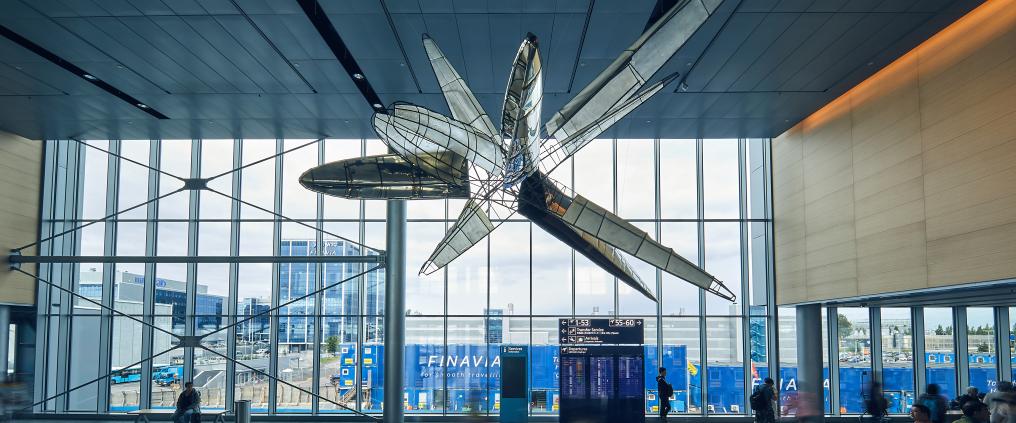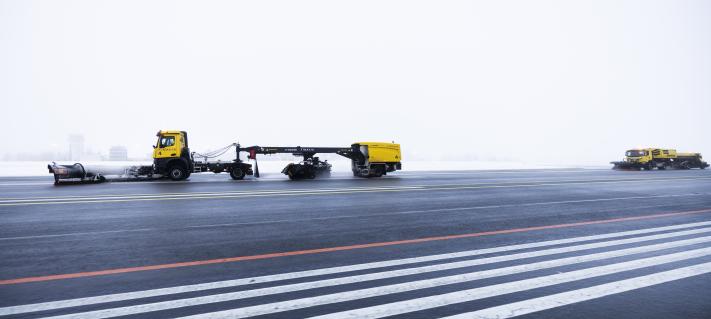Compared to other international airports, transfer time at Helsinki Airport is particularly short. At best, changing planes can take just 35 minutes. Contrastingly, at other major European airports the minimum connecting time can be up to an hour and a half.
Connecting is fast due to the compact size of the airport. Size, however, is not everything. In order to fulfil the promise of a speedy transit, passengers must be directed in the right place at the right time.
How are passengers guided through Helsinki Airport?
Support from digital systems
Transfer passengers are looked after below terminal 2 in the operation room, where several different systems are in use. For example, the Amorph simulation collects flight schedules, passenger numbers and the passengers’ connecting flights from various sources.
Graphs drawn by the simulation present how many passengers are expected at the airport at which time, and where transfer passengers should be directed so that they will catch their connecting flights on time.
“Based on this information, we decide on which route we will guide the passengers. We strive to optimise our resources, such as security and border control check points, which have been ordered in advance on the basis of the forecast,” says Antti Tikkanen, Business Analyst at Finavia.
Moreover, the Xovis queue tracking system helps in moving passenger flows. It gives real-time information on how long it will take to handle a certain number of passengers in border control, for instance.
Weekday afternoons are busiest
Rush hour at Helsinki Airport falls between 1.30 pm and 6 pm on weekdays. When Petri Pukkinen, Operations Supervisor at Finavia, arrives at work in the morning, he immediately starts planning the afternoon.
First, it’s the Asian flights that land, and then the European ones. Then, those who arrived from Asia depart for Europe, and those who arrived from Europe head for Asia. Routes are planned for passengers, and by midday the plan is sent to border and security control and arrivals hall service providers, among others.
Transfer passengers’ possible connecting times are calculated to give airlines and Finavia an idea of who is in a hurry and who is not. Flights change daily. At times, it means lots of phone calls, when additional security control check points must be opened quickly, or service advisors must be called on duty.
“Planes arrive when they arrive. We react according to the situation. It’s a race against time, and our job is to figure out ways to make both passengers and airlines happy in changing circumstances,” Pukkinen describes.
A joint effort with airlines
Another challenging factor in guiding passengers is the fluctuation of weather conditions.
“Bad weather can cause deviations in flights for an extended period of time. That means we are behind schedule and putting out fires.”
Finavia manages passenger flows in collaboration with airlines.
“Smooth transferring benefits everyone. We always do our best with the resources we have at that moment. Fulfilling our customer promise – for smooth travelling – requires a lot of coordination and adjustments daily,” say Tikkanen and Pukkinen.
Helsinki Airport is the leading Nordic airport in transfer connections around the world



